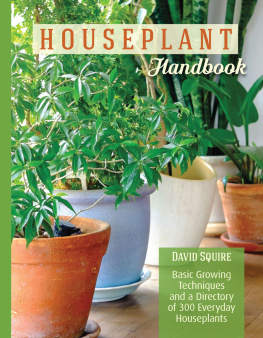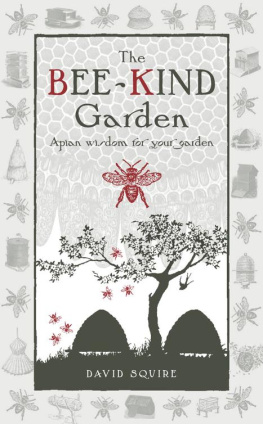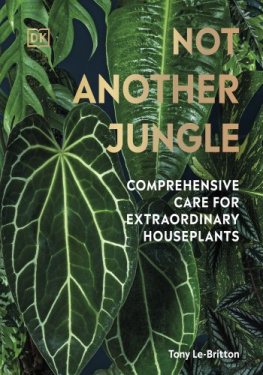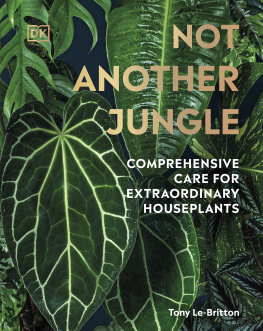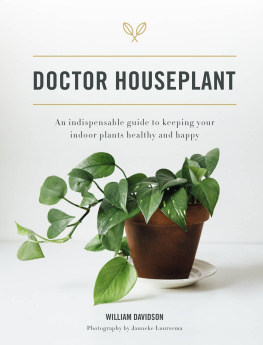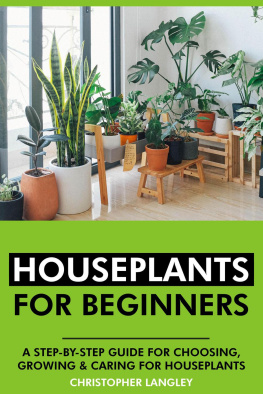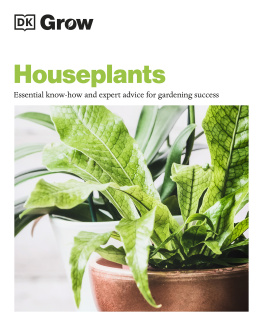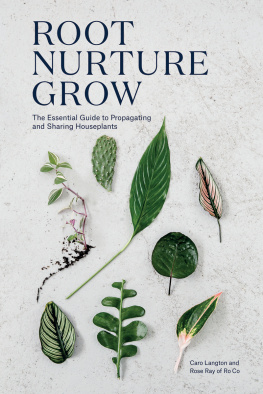Photo Credits
All photographs by Janet Peace, Hot Tomato Communications except for the following: Charles Dills, Garden Picture Library, Photo Natura, Garden World Images, John Ellis, Kevin Pratt, Marceline Siddons, Marianne Alexander, Peter McHoy, Photos Horticultural, Tropiflora, and Shutterstock.com
About the Author
David Squire studied botany and horticulture at the Hertfordshire College of Horticulture and the Royal Horticulture Societys Garden at Wisley, England, where he gained the Wisley Diploma in Horticulture. Also, he was awarded an NK Gould Memorial Prize for his collection of herbarium specimens of native plants, which has since been lodged with the Booth Museum of Natural History in Brighton, Sussex, England.
David has been an editorial staff member for several gardening magazines, book publishing companies, and part-work publishers and has written more than 85 gardening and natural history books, which have been translated into several languages and sold in 20 countries throughout the world.
Glossary
Acaricide: Chemical used to kill mites, such as red spiders
Acid: Soils and composts with pH below 7.0
Aerial roots: Roots appearing from a stem above soil/compost level, e.g., Philodendrons, Monstera deliciosa (Swiss Cheese Plant), ivies and some orchids
Air layering: Method of propagating single-stemmed houseplants, such as Ficus elastica (Rubber Plant)
Alkaline: Soils and composts with pH above 7.0
Annual: Plant that completes its life cycle in a single year seeds germinate, plants grow and produce flowers within one growing season
Anther: Part of a stamen, the male reproductive part of a flower
Aphids: Often known as greenfly, they cluster on stems, shoots, leaves, and flowers, sucking sap and causing damage
Areole: Unique to cacti, they are modified side-shoots in the form of small, cushion-like, usually raised areas; spines or hairs develop from them
Asexual: Non-sexual, sometimes used to refer to vegetative propagation, e.g., cuttings and division
Axil: Junction between leaf and stem, from where flower stems and side-shoots may develop
Biennial: Plant that makes its initial growth during one year and only flowers during the following year
Bleeding: Loss of sap from some plants after they are cut
Bloom: Two meanings: either a flower or a powdery covering
Bonsai: Art of growing dwarfed shrubs and trees in small containers
Bottle gardening: Growing plants indoors in enclosed environments created by large glass jars, e.g., carboys
Bottom heat: Warming of rooting mixture from below to encourage rapid root development
Botrytis: Fungal disease also known as gray mold
Bract: Modified leaf associated with flowers; some act as protection for a flower, others take the place of petals to become the main attraction, e.g., Euphorbia pulcherrima (Poinsettia)
Bud: Tightly packed, immature shoot or flower
Bulb: Food storage organ with a bud-like structure formed of fleshy scales attached at their bases to a basal plate, e.g., tulip
Bulbil: Immature miniature bulb, usually at the base of a bulb; some plants e.g., Asplenium bulbiferum (Mother Fern) have small plantlets on their leaves that are known as bulbils
Cactus: (plural: cacti) Succulent plants belonging to Cactaceae family; characterized by having areoles
Calcicole: Plant that likes lime
Calcifuge: Plant that dislikes lime
Calyx: Protective outer ring of flower parts, usually green
Capillary action: Passage of water upward through soil/potting compost: the finer the soil particles, the higher the rise of moisture (the same principle is used in self-watering systems)
Carboy: Large, round or pear-shaped glass bottle used as a container for plants
Cladode: Modified, flattened stem that takes the form and function of a leaf
Compost: Two meanings: the medium in which plants grow when in pots (known as potting soil in North America); material produced after decomposition of vegetable waste, which is then dug into the soil or used as a mulch
Corm: Swollen stem bases often classified with bulbs, but structurally different, e.g., crocuses, freesias
Crock: Piece of broken clay pot put in the base of a clay pot to prevent the drainage hole from becoming blocked
Cultivar: Plant produced in cultivation and indicating a cultivated variety. Earlier, all variations, whether produced naturally in the wild or within cultivation, were known as varieties
Cutting: Vegetative method of increasing plants, by which a severed piece of a parent plant is encouraged to develop roots
Damping off: Disease that usually attacks seedlings soon after germination
Dead heading: Removal of dead or faded flowers to keep a plant tidy and encourage further flower development
Dibber: Rounded gardening tool for making holes; used for pricking out seedlings and inserting cuttings in seed-trays and pots
Division: Vegetative method of propagation involving root division
Epiphyte: Plant that grows on another but is not parasitic, e.g., some orchids and bromeliads
Fern: Perennial, flowerless plant that produces spores
Foliar feed: Fertilizer applied to foliage
Fronds: Leaves of a fern or palm
Fungicide: Chemical used to combat fungal diseases
Genus: Group of plants with similar botanical characteristics; within a genus are one or more species, each with slightly different characteristics
Germination: Process that occurs within a seed when given adequate moisture, air, and warmth; the seed-coat ruptures and a seed-leaf grows upward toward the light while a root develops and grows downward (to most gardeners, germination is when they see seed-leaves appearing through the surface of compost/soil)
Glochid: Small, hooked hair that grows on some cacti
Heel: Pieces of older wood attached to the base of some half-ripe (semi-mature, semi-hardwood) cuttings, which need to be trimmed to remove whisker-like growths
Humidity: Amount of moisture in the atmosphere the higher the temperature, the more moisture air retains
Insecticide: Chemical that kills insects
Loam: Mixture of sand, clay, silt, and decomposed organic material
Mist-spraying: Using a sprayer to create a fine mist of clean water around plants to increase humidity
Neutral: Neither acid nor alkaline
Node: Leaf joint or position where a shoot grows from a stem or main branch
Offset: Young plant that arises naturally around its parent, e.g., some bromeliads, bulbs, and Houseleeks ( sempervivums )
Peat: Partly decomposed vegetable material, usually acid, often used in potting and seed composts
Pesticide: Chemical compound for killing insects and other pests
Petiole: Leaf-stalk
pH: Logarithmic scale used to define the acidity or alkalinity of soil. Chemically, neutral is 7.0, with figures above indicating increasing alkalinity, and below increasing acidity. Most plants grow well at 6.5
Plantlet: An offset produced on a plants leaves or stems
Pot bound: When a plant fills its container with roots and has no further room in which they can grow; it is usually repotted at this stage
Potting-on: Transfer of an established plant from one pot to another
Potting soil: American term for potting compost
Potting-up: Transfer of a young plant from a seed-tray into a pot
Pricking-out: Transfer of seedlings from a seed-tray into another seed-tray or pot to give them more space
Propagation: Raising of new plants
Repotting: Moving a plant that fills its existing pot with roots into a larger one
Rhizome: Horizontal stems, underground or partly above; may be slender (Lily-of-the-Valley) or thick and corrugated (Bearded Irises)
Root ball: The potting compost in which a houseplant grows, together with its roots

